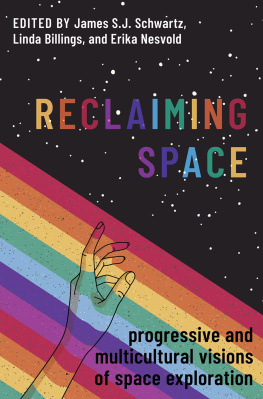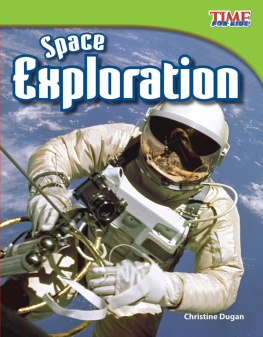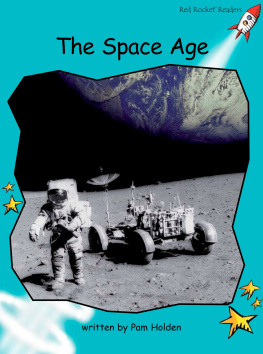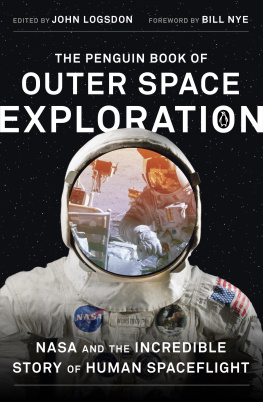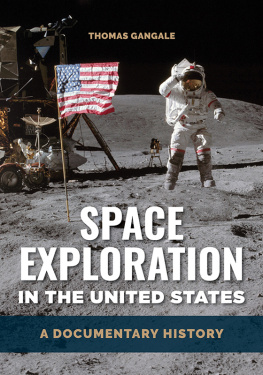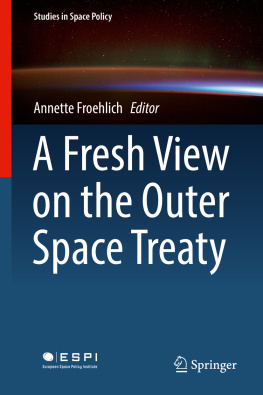Fred Scharmen - Space Forces: A Critical History of Life in Outer Space
Here you can read online Fred Scharmen - Space Forces: A Critical History of Life in Outer Space full text of the book (entire story) in english for free. Download pdf and epub, get meaning, cover and reviews about this ebook. year: 2021, publisher: Verso Books, genre: Science fiction. Description of the work, (preface) as well as reviews are available. Best literature library LitArk.com created for fans of good reading and offers a wide selection of genres:
Romance novel
Science fiction
Adventure
Detective
Science
History
Home and family
Prose
Art
Politics
Computer
Non-fiction
Religion
Business
Children
Humor
Choose a favorite category and find really read worthwhile books. Enjoy immersion in the world of imagination, feel the emotions of the characters or learn something new for yourself, make an fascinating discovery.
- Book:Space Forces: A Critical History of Life in Outer Space
- Author:
- Publisher:Verso Books
- Genre:
- Year:2021
- Rating:3 / 5
- Favourites:Add to favourites
- Your mark:
Space Forces: A Critical History of Life in Outer Space: summary, description and annotation
We offer to read an annotation, description, summary or preface (depends on what the author of the book "Space Forces: A Critical History of Life in Outer Space" wrote himself). If you haven't found the necessary information about the book — write in the comments, we will try to find it.
The radical history of space exploration from the Russian Cosmists to Elon Musk
Many societies have imagined going to live in space. What they want to do once they get up therewhether conquering the unknown, establishing space colonies, privatising the moons resourcesreveals more than expected. In this fascinating radical history of space exploration, Fred Scharmen shows that often science and fiction have combined in the imagined dreams of life in outer space, but these visions have real implications for life back on earth.
For the Russian Cosmists of the 1890s space was a place to pursue human perfection away from the Earth. For others, such as Wernher Von Braun, it was an engineering task that combined, in the Space Race, the Cold War, and during World War II, with destructive geopolitics. Arthur C. Clarke, in his speculative books, offered an alternative vision of wonder that is indifferent to human interaction. Meanwhile NASA planned and managed the space station like an earthbound corporation. Today, the market has arrived into outer space and exploration is the plaything of superrich technology billionaires, who plan to privatise the mineral wealth for themselves. Are other worlds really possible?
Bringing these figures and ideas together reveals a completely different story of our relationship with outer space, as well as the dangers of our current direction of extractive capitalism and colonisation.
Intricately dissects seven foundational visions of humanitys future in space, from some of the most well-known and prolific engineers, thinkers, entrepreneurs, and science fiction writers in history. Scharmens keen eye for structures and systems lets him tease out the common threads of conquest, domination, hope, and fear that drive us towards the stars. Erika Nesvold, co-founder of JustSpace Alliance
Fred Scharmen teaches architecture and urban design at Morgan State Universitys School of Architecture and Planning. He is the co-founder of the Working Group on Adaptive Systems, an art and design consultancy based in Baltimore, Maryland. His first book, Space Settlements, was published in 2019. His writing has been published in the Journal of Architectural Education, Atlantic, CityLab, Slate, Log, CLOG, Volume, and Domus. His architectural criticism has appeared in the Architects Newspaper, and in the local alt-weekly Baltimore City Paper.
Fred Scharmen: author's other books
Who wrote Space Forces: A Critical History of Life in Outer Space? Find out the surname, the name of the author of the book and a list of all author's works by series.



